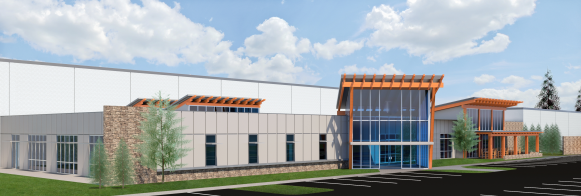
Many people are familiar with the most common green and sustainable building rating system in the United States, ‘Leadership in Energy and Environmental Design’ (LEED). Our clients interested in LEED are conscious of the environment, mindful of the health and safety of their employees, and want to keep energy usage low.
LEED may be the most widely used program, however, there are building types for which it may not be the best fit. Some facilities are in a rural setting which can make it more challenging to obtain LEED certification because there many points are tied to urban sites. Others are reluctant to pay for the elements required to obtain the LEED certification or are concerned about submitting information about their building to a third party or about the bureaucratic process.
One example of its’ shortcomings is that LEED does not have a program for Production Facilities. These are buildings that house the production of a variety of products including food, beverages, personal care products, and pharmaceuticals.
Design Group has been able to assist these companies who want to be green and has designed healthy, energy efficient buildings that meet their needs. One such project executed by Design Group was a production facility for a company in the Midwest. The project was designed match LEED Silver Level but was not submitted to the Green Business Certification, Inc., for certification.
To encourage green design the town rewarded the company with 15 years’ tax free status. Since, production facilities aren’t covered in the LEED program, we developed energy models to prove energy efficiency. Additionally, Design Group assisted the owner in obtaining over $200,000 in federal tax credits as a result of the energy efficient design.
Designing the most energy efficient building possible, our building envelopes are well insulated and many are designed with air barrier technology. The metal panels we use to clad warehouses and production facilities are considered a “Universal Wall” product. A Universal Wall is one that can be used in any climate. Metl-Span, one of the panel manufacturers we specify, also self-describes their panels as the “Perfect Wall”, which is one that can provide four important barriers; rain, air, vapor and thermal.

The Design Group team of architects, engineers and construction managers partner with clients to provide building design that meets their goals, fits within their budgets and provides energy efficient buildings without adding costs for items they do not want nor need. Design Group includes measures aimed at keeping energy requirements low, reducing upfront costs and providing a long life for the building.
The goal through this better design approach is an energy efficient facility using electrical, mechanical and construction methods that meet LEED standards without paying the premium associated with LEED certification.
If your company wants to achieve energy efficiency through similar cost-optimized solutions, reach out to our experts for a consultation here.
